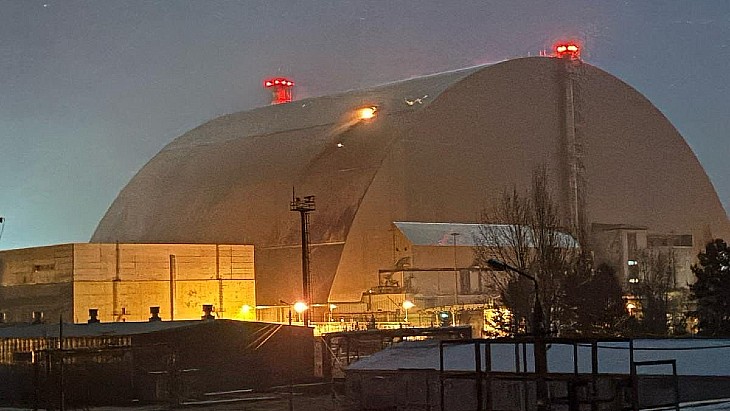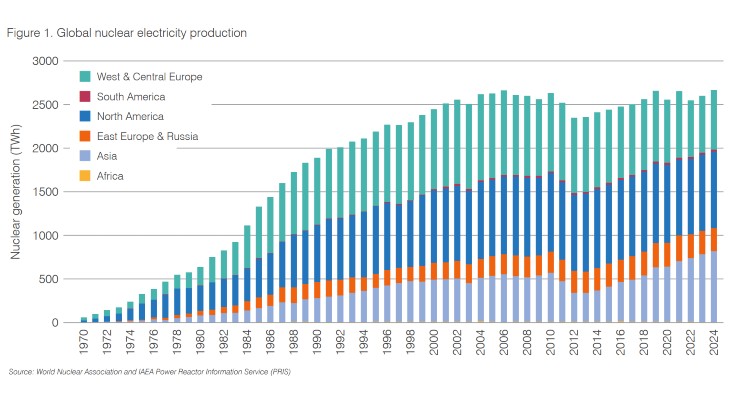Radionuclide analysis of water from the used fuel pool of Fukushima Daiichi unit 4 suggests that some of the 1331 used fuel assemblies stored there may have been damaged, but the majority are intact.
 |
| Concrete pump truck used to collect samples from the Fukushima Daiichi 4 spent fuel pool (Image: Tepco) |
A concrete pump vehicle with a 62-metre arm was used to collect samples from the pool. The temperature in the pool was found to have risen to 90oC, and the water level had dropped by 5 metres. In response some 195 tonnes of water were sprayed into the pool on 13 April.
When used nuclear fuel is removed from a reactor, it is stored underwater in pools (sometimes referred to as used fuel ponds) until it is cool enough to be removed from the site for further processing or storage pending disposal. In normal operation, the water in the pool is at a temperature of about 30oC, but if cooling is lost, the water in the pool can reach boiling point and if the fuel rods become exposed there is the risk of hydrogen formation. The pools for reactors 1-4 all lost cooling capacity in the aftermath of the natural disasters of 11 March, and keeping the fuel pools at all of the Fukushima Daiichi reactors topped up with water has been a priority.
Fukushima Daiichi unit 4 was offline for regular maintenance when the 11 March earthquake and tsunami struck, meaning that its full inventory of nuclear fuel was stored in the used fuel pool at the time. The top part of the building, where the fuel pool is housed, was destroyed by a hydrogen explosion followed by a fire on 15 March.
Hitachi sets up Fukushima division
Hitachi has announced it has set up a new division, the Fukushima Nuclear Power Stations Project, to strengthen its support for restoration work at Fukushima. Headed by senior officer for nuclear power plant business Akira Maru, the division has launched a joint Japanese-US team bringing together resources from Hitachi, Hitachi-GE, GE-Hitachi, Hitachi Power Systems America and other US entities.
Some 350 Hitachi employees have already been dispatched to the Fukushima site, the company noted.
EU sets levels
The European Union has formally set maximum radiation levels for imported food from Japan. The new levels, published on 12 April, replace earlier provisional levels for isotopes of strontium, iodine, plutonium and trans-plutonium alpha emitters and all other nuclides with a half-life greater than 10 days, notably caesium-134 and -137. Different maximum levels apply to foods for infants and young children, milk and dairy produce, liquid foodstuffs and other foodstuffs, with the most stringent limits on foods for infants and young children.
Maximum levels for caesium-134 and -137 and iodine isotopes have also been formally set for imported feeds.
Researched and written
by World Nuclear News












